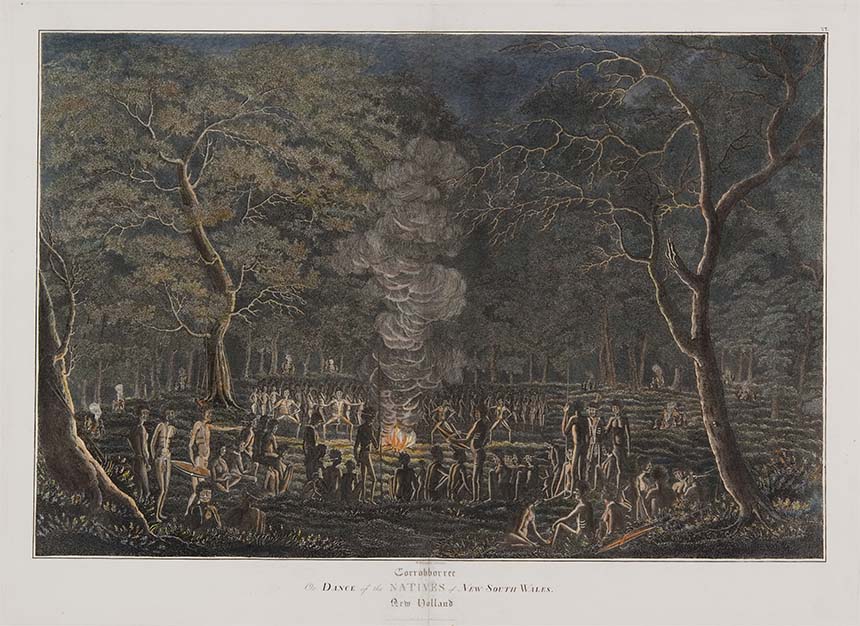
Aboriginal Heritage and Development

The Traditional Custodians of this land are a people who belong to the oldest continuing culture in the world. They have a continuing connection to the land and waters, and unique cultural and spiritual relationships to the land, waters, and seas situated within the Newcastle local government area. From the southern extremities of Lake Macquarie (awaba) to the Hunter River (coquun) in the north, it is known that their heritage and cultural ties date back tens of thousands of years on this land (Burai). Traditionally, these and surrounding lands were made up of numerous Nurras, family clan group areas. Each Nurra had ceremonial, story and marriage obligations. Forming binding relationships between peoples of this language group, and strengthening ties with neighbouring language groups. They gathered on regular occasions to pay respect to the Dreaming Spirits, the country and each other, through ceremony, song and dance. This maintained the Lore, continuously passing it on.
Evidence of continuous and extensive Aboriginal occupation of Newcastle is reflected in the recent archaeological records. Multiple sites containing Aboriginal objects have been uncovered and documented throughout the local government area. This has included but is not limited to sites in Black Hill, Fletcher, Maryland and Shortland in close proximity to Burraghihnbihng (Hexham Swamp), in Burrabihngarn (Stockton), in Hunter Street Newcastle West, Wolfe Street The Hill, a shell midden at Meekarlba (Honeysuckle), and a tool making site at the Convict Lumber Yard on Scott Street.
Frequently asked questions
Aboriginal cultural heritage consists of places and items that are of significance to Aboriginal people because of their traditions, observances, lore, customs, beliefs and history. It provides evidence of the lives and existence of Aboriginal people before European settlement through to the present. Aboriginal cultural heritage is dynamic and may comprise physical (tangible) or non-physical (intangible) elements. It includes things made and used in traditional societies such as stone tools, art sites and ceremonial or burial grounds. It also includes more contemporary and/or historical elements such as old mission buildings, massacre sites and cemeteries. Tangible heritage is situated in a broader cultural landscape and needs to be considered in that context and in a holistic manner.
Aboriginal cultural heritage also relates to the connection and sense of belonging that people have with the landscape and each other. It recognises that Aboriginal people understand cultural heritage and cultural practices as being part of both the past and the present and that cultural heritage is kept alive and strong by being part of everyday life.
Cultural heritage is not confined to sites; it also includes peoples’ memories, storylines, ceremonies, language and ‘ways of doing things’ that continue to enrich local knowledge about the cultural landscape. It involves teaching and educating younger generations. It is also about learning and looking after cultural traditions and places, and passing on knowledge. It is enduring but also changing. It is ancient but also new.
Aboriginal cultural knowledge provides crucial links between the past and present and therefore represents an essential part of the identities of Aboriginal people and all Australians.
Aboriginal cultural significance means the living, traditional and historical practices, representations, expressions, beliefs, knowledge and skills (together with the associated environment, landscape, places, objects, ancestral remains and materials) that Aboriginal people value as part of their cultural heritage and identity.
The City of Newcastle engaged Australian Museum Business Services (AMBS) in 2003 to undertake a city-wide study of Aboriginal heritage across the LGA. Council accepted a final report in December 2005. The study aimed to develop a management framework for the identification, consideration and management of Aboriginal cultural heritage, providing City of Newcastle with a set of guiding principles for understanding and valuing Aboriginal cultural heritage.
Accordingly, an essential set of principles were established in the Heritage Study, including the following:
- Aboriginal cultural heritage is to be recognised as a finite and valuable resource of the Newcastle LGA.
- Aboriginal community members are to be pivotal in the identification, assessment, and management of Aboriginal cultural heritage, as it is primarily Aboriginal people who should determine the significance of their heritage.
- Places of Aboriginal cultural value within the Newcastle LGA are to be actively conserved and managed to retain those cultural values. Appropriate conservation action will vary according to the level of significance.
- Aboriginal cultural heritage is to be actively managed during the development process, to ensure appropriate conservation and impact mitigation outcomes are achieved.
- Compliance with relevant statutory controls, specifically the National Parks and Wildlife Act (1974) and the Environmental Planning and Assessment Act (1979), is to be required for all development and heritage programs.
- Sustainable, ongoing management strategies for Aboriginal cultural heritage should be promoted within Council and the broader community, through heritage training for Council personnel and public interpretation programs.
These set of principles underpin our Aboriginal Heritage Management Strategy and Heritage Strategy.
Downloads:
- Aboriginal History and Heritage: a Guide – NSW Heritage Office, November 1998 (PDF)
- Aboriginal Heritage Study: Newcastle Local Government Area - December 2005 (PDF)
The Heritage Council of NSW, assisted by Heritage NSW, is the regulator of Aboriginal heritage across New South Wales. Heritage NSW administers legislation which ensures that Aboriginal cultural heritage must be considered as part of land management practices. Heritage NSW protects Aboriginal cultural heritage through:
- Regulation
- Management planning
- Public education and awareness
- Physical protection works.
Aboriginal sites are a very important part of Australia's cultural heritage, and many are on the register of the National Estate. Even more important is the significance these sites have for Aboriginal communities. To Aboriginal people, the sites provide a direct link with their traditional culture. It is important to preserve as many of them as possible.
Heritage NSW is responsible for the protection and preservation of all Aboriginal objects and places in NSW. The primary piece of legislation which protects Aboriginal cultural heritage in NSW is the National Parks and Wildlife Act 1974 (NPW Act). Under the NPW Act it is an offence to harm (destroy, deface, or damage) or desecrate an Aboriginal object or Aboriginal place, or in relation to an object, move the object from the land on which it has been situated. If you find an Aboriginal object, you should report it to Heritage NSW on 02 9873 8500 or heritagemailbox@environment.nsw.gov.au.
Aboriginal objects are physical evidence of the use of an area by Aboriginal people. They can also be referred to as 'Aboriginal sites', 'relics' or 'cultural material'. Aboriginal objects include:
- Physical objects, such as stone tools, Aboriginal-built fences and stockyards, scarred trees and the remains of fringe camps
- Material deposited on the land, such as middens
- The ancestral remains of Aboriginal people.
- Handicrafts made by Aboriginal people for sale are not 'Aboriginal objects' under the National Parks and Wildlife Act 1974 (NPW Act).
The NPW Act affords protection to all Aboriginal objects and the Heritage Council of NSW, assisted by Heritage NSW, is responsible for its management and regulation. Known Aboriginal objects and sites are recorded on Heritage NSW's Aboriginal Heritage Information Management System (AHIMS). If you discover something you think should be recorded as an Aboriginal object you should report it to Heritage NSW on 02 9873 8500 or heritagemailbox@environment.nsw.gov.au.
An Aboriginal Place is an area of land that has special significance to Aboriginal people. It can have spiritual, historical, social, educational, natural resource use or other type of significance to Aboriginal people. These places range from small ceremonial sites to mountains and lagoons and have been identified all over NSW.
The National Parks and Wildlife Act 1974 (NPW Act) can protect areas of land that have recognised values of significance to Aboriginal people. These areas may or may not contain Aboriginal objects (i.e. any physical evidence of Aboriginal occupation or use). Any person can nominate such an area to be considered for Aboriginal Place gazettal. Once nominated, a recommendation can be made to the NSW Minister for Aboriginal Affairs.
The NSW Minister for Aboriginal Affairs can declare an area to be an 'Aboriginal Place' if the Minister believes that the place is or was of special significance to Aboriginal culture. An area can have spiritual, natural resource usage, historical, social, educational or other type of significance.
Aboriginal objects and places can be on public or private land, and do not change the land tenure. When a significant place is declared an Aboriginal Place, it is protected under the NPW Act.
Heritage NSW welcomes nominations for Aboriginal Places supported by the local Aboriginal community, as Aboriginal people are the main determinants of Aboriginal cultural significance. Heritage NSW will support the Aboriginal community in considering:
- their aspirations for a site
- other available mechanisms for a site
- the risks to and ways of enhancing a site’s cultural values
- longer-term site management issues.
Where there is a proposal to declare an Aboriginal Place, Heritage NSW encourages the preparation of a formal management plan by the landowner/ land manager or occupiers with agreement with the Aboriginal community.
Due diligence must be followed in determining whether your actions will harm Aboriginal objects. The Due Diligence Code of Practice for the Protection of Aboriginal Objects in NSW explains and provides practical guidance about what due diligence means. Anyone who exercises due diligence in determining that their actions will not harm Aboriginal objects has a defence against prosecution for the strict liability objects offence if they later harm an Aboriginal object.
A person must not harm or desecrate an object that the person knows is an Aboriginal object and a person must not harm or desecrate an Aboriginal place. Individuals or organisations who are contemplating undertaking activities which could harm Aboriginal objects should consult this due diligence code or engage the services of an appropriately qualified archaeological consultant to carry out a Due Diligence study on any proposed development. This code provides a process whereby a reasonable determination can be made as to whether or not Aboriginal objects will be harmed by an activity, whether further investigation is warranted, and whether the activity requires an Aboriginal Heritage Impact Permit (AHIP) application.
An AHIP can be issued by Heritage NSW under Part 6 of the National Parks and Wildlife Act 1974 (NPW Act) where harm to an Aboriginal object or Aboriginal place cannot be avoided. An AHIP is a defence to a prosecution for harming Aboriginal objects and/or Aboriginal places if the harm was authorised by the AHIP and the conditions of that AHIP were not contravened.
How do you search for Aboriginal Places?
Search the NSW State Heritage Inventory. The State Heritage Inventory is a database of heritage items and places in NSW which includes declared Aboriginal Places. It provides detailed information including a map, photos, location information, gazettal notices, and an explanation of the significance for each of the declared Aboriginal Places in NSW.
How do you search for recorded Aboriginal objects?
Heritage NSW maintains the Aboriginal Heritage Information Management System (AHIMS) which includes:
- Information about Aboriginal objects that have been reported to the Director General, Department of Premier and Cabinet
- Information about Aboriginal Places which have been declared by the Minister for Aboriginal Affairs to have special significance with respect to Aboriginal culture archaeological reports.
AHIMS has operated since the 1970s, and contains detailed information on over 100,000 recorded sites and over 14,000 archaeological and other Aboriginal cultural heritage assessment reports.
AHIMS is used by government, industry and heritage professionals who need the information for land-use planning, regulation and conservation management. It is also used by Aboriginal communities to help them manage, conserve and protect local sites and heritage. Some of the many reasons people and organisations require information from AHIMS is for natural resource management, cultural heritage assessments, archaeological surveys, development proposals, property purchases and oral history projects.
Checking for Aboriginal sites on AHIMS is a step in the Due Diligence Code of Practice for the Protection of Aboriginal Objects in NSW process. This can be done by logging in to AHIMS web services and conducting a free AHIMS Basic Search in the area of your proposed activity.
If the results of the initial AHIMS Basic Search indicate that AHIMS contains information about an Aboriginal site in the area of your proposed activity, you must request an Extensive Search. For the purposes of due diligence, you may rely on the AHIMS Basic Search results for 12 months.
An AHIMS Basic Search will tell you whether there are any Aboriginal sites recorded in the search area. An Aboriginal site that is recorded on AHIMS could be:
- An Aboriginal object (as defined under the NPW Act)
- A group (i.e. a collection, scattering, deposit, etc.) of Aboriginal objects
- An area of land containing Aboriginal objects
- A 'potential' archaeological deposit which is an area where, based on previous investigation, Aboriginal objects are likely to be present
- A declared Aboriginal Place (as defined under the NPW Act) which may or may not contain Aboriginal objects
- An Aboriginal site that has been partially or completely destroyed under the conditions of a past consent.
To check if your property is a site of known or potential Aboriginal cultural heritage, use City of Newcastle's online mapping tool Aboriginal Cultural Heritage and Historical Archaeology App.
- Refer to Newcastle Archaeological Management Plan 1997 and Newcastle Archaeological Management Plan Review 2013 for more details on archaeological sites identified by the App.
- Refer to Schedule 5 and associated heritage map sheets of the Newcastle Local Environmental Plan 2012 for heritage listed archaeological sites.
- More details on archaeological sites listed by the Newcastle Local Environmental Plan 2012 and declared Aboriginal Places are available by using the NSW State Heritage Inventory (SHI).
- For a detailed search of declared Aboriginal Places and other sites of Aboriginal cultural significance, use the Aboriginal Heritage Information Management System (AHIMS).
The Newcastle Development Control Plan (DCP) applies to development that will, or is likely to affect, the heritage significance of an Aboriginal place or object. This section provides aims, objectives and controls regarding the due diligence process and should be read in conjunction with the following associated technical manuals:
- Aboriginal Cultural Heritage Consultation Requirements for Proponents 2010, April 2010, Department of Environment, Climate Change and Water.
- Code of Practice for Archaeological Investigation of Aboriginal Objects in New South Wales, October 2010, Department of Environment, Climate Change and Water.
- Due Diligence Code of Practice for the Protection of Aboriginal Objects in New South Wales, September 2010; Department of Environment, Climate Change and Water.
- Guide to investigating, assessing and reporting on Aboriginal cultural heritage in NSW, April 2011, Office of Environment and Heritage, Department of Premier and Cabinet
- Aboriginal Heritage Study: Newcastle Local Government Area, December 2005.
If your development proposal involves ground disturbance or excavation, City of Newcastle (CN) requires an Aboriginal Heritage Information Management System (AHIMS) Basic Search conducted with a buffer of 200m of the proposal site to be provided with the development application submission. This will confirm whether there are any Aboriginal sites and/or declared Aboriginal Places in or near the proposal site.
It is your responsibility to seek the necessary approval from the Heritage Council of NSW under the National Parks and Wildlife Act 1974, separate to CN's Development Assessment process.
You will need to apply and be granted an Aboriginal Heritage Impact Permit (AHIP) by the Heritage Council of NSW and meet certain requirements before the activity can take place. Visit the Heritage NSW website for further details on the AHIP process and how to apply.
It is an offence under the National Parks & Wildlife Act 1974 (NPW Act) to harm (destroy, deface, or damage) or desecrate an Aboriginal object. In accordance with the NPW Act, if previously unknown Aboriginal objects are discovered during the course of any development works, works within the immediate vicinity of the Aboriginal object should cease immediately and Heritage NSW be contacted on 02 9873 8500 or heritagemailbox@environment.nsw.gov.au, to determine an appropriate course of action prior to the recommencement of work in the area of discovery. Additional assessment and approval may be required prior to works continuing in the affected area(s) based on the nature of the discovery. Severe penalties can be applied to corporations or individuals who are found to be in breach of the NPW Act.
This applies to all land in NSW, including sites where an Aboriginal Heritage Impact Permit (AHIP) has already been issued by the Heritage Council of NSW under the NPW Act.











